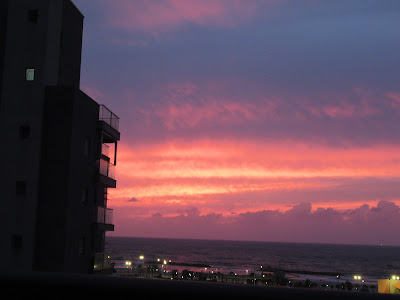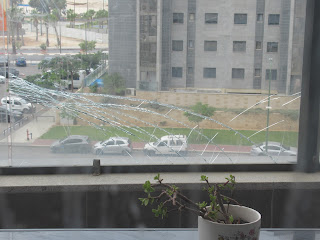Most years, I look forward to Simchat Torah. It celebrates the end and the beginning of the Torah reading cycle and our connection to our most sacred text.
At our synagogue, for many years, the dancing would spill out of the sanctuary and out to 100th street with hundreds and hundreds of people dancing and singing and celebrating the Torah. For many years several synagogues in our neighborhood also danced on the streets and people would wander from celebration to celebration up and down Broadway until late into the night.
9-11 put an end to the dancing on the streets and the celebrations moved indoors.
Last year we were in Ashkelon and because in Israel only one day of the holiday is celebrated, we experienced hakafot, circling the synagogue with the Torah scrolls on Friday night for the first time in our lives. Of course our lives changed at 6:29 in the morning when the rockets started falling all around us.
So, it is Simchat Torah once again. My synagogue is doing more subdued celebrations. A friend posted this moving link. I am sure that many of you have also seen the quotes about rabbis mandating that there should be celebrations on Simchat Torah even in the year after the Holocaust ended to prove the resilience of the Jewish people. I get that, I really do.
I also know that I have been dreading Simchat Torah as we are heading towards it. I don't know if I am emotionally capable of being in a room with celebrating people. This morning my email box included this beautiful essay from the blog of the National Library of Israel. It's in Hebrew and not easy to read Hebrew, so forgive me for including the link if the language is beyond you.. But basically the post is about the history of Simchat Torah and an old tradition of the holiday as a somber day, the day we remember the death of Moses and the day we remember the death of those we love. I found the essay to be be comforting.
One thing that Judaism is good at is holding two conflicting emotions at one time. Every joyful holiday also has Yizkor, the public/private memorial service.We remember the dead under the wedding canopy. We shatter a glass at the end of a wedding ceremony to remember our national loss.
I keep thinking about a wedding I attended several years ago The groom's brother had died about six months before the wedding. It was a tragic, tragic loss. All of us dancing around the bride and groom were feeling such joy and such heart aching sadness. I remember the groom's father dancing with every bit of his energy as tears streamed down his face. It was hard to hold on to so much emotion that day During that entire wedding my heart hurt because it was so difficult to hold two such big and opposite emotions at one time.
As I type this, I don't know if I will be in synagogue for Simchat Torah. I feel the religious and national obligation to be there and to dance...but I don't know if I can manage it as an individual human.
This video showed up on my feed this morning. It was written, originally in Yiddish, after the Holocaust. The text and the music seem to exactly capture the ambivalence of celebrating such a joyful holiday in the face of loss.
מה שאנו, הרי אנו, אבל יהודים אנו! מה שאנו עושים אנו, אבל מדינה לנו! מה שאנו, הרי אנו, אבל יהודים אנו! מה שאנו עושים אנו, אבל שרים אנו! מה שאנו, הרי אנו, אבל יהודים אנו! מה שאנו עושים אנו, אבל תורה לנו! מה שאנו, הרי אנו, אבל יהודים אנו! מה שאנו עושים אנו, אבל שמחת תורה לנו!
The gist of the lyrics is "What are we? We are Jews, and we have a state, What are we? we sing. What are we? We are Jews and we have the Torah . What are we? We are Jews? What do we do? We have Simchat Torah"
The melody isn't exactly pretty and it is sung with so much pain. I think that this is my anthem for this Simchat Torah.







Comments
Post a Comment
I love hearing from my readers. I moderate comments to weed out bots.It may take a little while for your comment to appear.